“IMPROVING FLOOD CONTROL IN THE FACE OF CLIMATE CHANGE” |21 February 2015
Construction of Bridge at La Passe, Dredging of lagoon at the Jetty, Coastal Rehabilitation, De-silting of “Lanmare Soupap” , Construction of Bridge at L’union Estate outlet and Construction of Culvert and Drain at La Passe La Digue – Press Release
In late January 2013, La Digue recorded one of its worst flooding event in the history of this island during one of the heaviest rainfall coincide with the Subtropical depression Feleng.
Further to that, the island was again hit with severe flooding last January 2014 and again many houses, properties, businesses and infrastructures were flooded and cost significant amount of losses to the inhabitants and businessmen on La Digue.
The “Lanmar Soupap” the main storm water discharge channel and also acting as the cut-off point between the mountain and the plateau overflowed its bank, flooding roads and compounds
Government realized the urgent need to address the flooding issues on La Digue despite, the works that were needed to address the recent flooding occurred in the Southeast Mahe as a result of the Tropical Depression Feleng. DTF works shifted to La Digue though not neglecting works that had already started at Au Cap and Anse Aux Pins.
Assessment site visits were carried out by DTF assisted by WSP, a private Engineering consultancy agency to investigate the causes and to come up the most appropriate methods to reduce the flooding events that severely affected the La Digue Community.
The results of these assessments revealed some deficiencies that contributed to the flooding episodes on La Digue in January 2013 and February 2014.
Below are the findings based on the results of the assessments carried out by DTF and WSP;
1. Inadequacy of outlets for the effective evacuation of storm water flow from the La Digue plateau and the “Lanmare Soupap” that is the main marsh channel that also act as the cut-off point between the flow from the upper terrain and the plateau.
2. The two main outlets at L’union Estate and La Passe areas were found to be inadequate in terms of their capacity to effectively discharge the flow from the marsh in a high precipitation event.
3. The assessment made on the “Lanmare Soupap” revealed that the marsh channel is quite silted up in most areas along the marsh from L’union to La Passe and in some areas construction has narrowed or divert the channel from its original flow-path.
4. Some of the bridges providing crossing over the channel also contributed to the rise in the water level during heavy rainfall as they bottle-neck the flow towards the outlets.
5. Most of the main and secondary roads are without storm water drains or the drains installed are not quite effective in the evacuation of surface flows from the roads and plateau.
6. Lack of gradient, depressions in the plateau, blocked channels were also some of the findings revealed during the assessments.
After the assessments, other works followed such as consultation meetings with the inhabitants, topographic levels to determine the locations and capacity of the drains and outlets to constructed.
Ground works for the collection of data, for the design of the outlets and drains started in the month of March 2014 and due to the complexity of the design for the two main bridges at La Pass and L’union Estate, delays were encountered in the design phase of the project. Further to that, delays were encountered in getting the inhabitants to sign the leeways that were important for the implementation of the project as the location of the bridge crosses private properties and this is also the case for the project to de-silt and re-construction on bridges on “Lanmare Soupap” of which the marsh channel also crosses private properties.
Finally, the Contract for the La Digue works which includes, the construction of the La Passe’s bridge, dredging works at the La Digue Jetty and Coastal rehabilitation works near Le Domaine De L’orangeraie was awarded to UCPS through selective bidding procedures. The cost for the construction of the La Passe’s bridge stands at SR. 3,700,000.
Delays was also encountered in getting permission from LTD to barge in heavy and specialized machineries on La Digue for the project that would also be used for dredging works to be carried out inside the La Digue Jetty to acquire sand for the coffer dam for the protection of the bridge works on the La Passe bridge. Meetings were held with LTD before permission was granted for machineries to be transported on La Digue.
Delays were also encountered in the setting-up of the working area and the road diversion for the construction of the new bridge. Delay has also been encountered for the diversion/re-location of the utilities that were found within the alignment of the new bridge.
Negotiations took a while for the Contractor to get a barge for the transportation of the machineries on La Digue and also had to wait for favourable weather conditions for the barge to transport the machineries on La Digue, finally the date for the transportation of the machineries was set for the 3rd October.
Preliminary works started for the construction of the La Digue’s bridge started on the 3rd October with the setting out for the bridge works, including removal of trees for the road diversion, erecting of the hording, diversion of utility cables and water pipes etc…
Construction of the bridge is to link-up with de-silting of the “Lanmare Soupap” marsh as the de-silting works will compliment the widening of the La Passe’s bridge so as to increase the hydraulic capacity of the marsh.
The Contract for the de-silting works, which includes the construction of two new bridges crossing the marsh channel and also rock armouring works at selected locations along the marsh channel was awarded to DM Construction at the cost SR. 785,714.50 sourced under the Capital Budget of the Coastal Adaptation and Management Section in the Energy & Climate Change Department form the Ministry of Environment, Energy & Climate Change. A “Terrapins” Capture and Release program was also conducted so as to protect these species from the disturbance to be caused by the heavy machineries while maneuvering inside the channel for a period of two and half months.
Another major bridge has been earmarked to be constructed at the L’union Estate outlet of which construction will start in 2015, to improve the storm water evacuation from the L’union Estate area consisting of significant low-lying areas including the largest farm on the Island, the L’union Estate Farm.
The 6m wide, 1.8m height Bridge will be a major boost in improving the discharge of storm water flow from L’union Estate during heavy rainfall. The capacity of the bridge has calculated to cater for 10 year return period of an extreme rainfall. The project is still in the tendering phase for awarding of contract to the successful contractor.
The new bridge will be complimented by the de-silting works to be carried out from the bridge inland to about 600m, with the aim of improving the retention capacity of the marsh, that would also includes, demolition of barrier across the marsh and also the construction of a new bridge to the L’union Estate Landfill to improve the hydraulic capacity of the marsh channel.
A “Terrapins” capture and release exercise has been programmed as part of the biodiversity protection measures during the excavation works in the area, so as not to lose and disturb the species found this area. The capture and release program, will see the participation of different outreach groups such School Children from La Digue and members from the Seychelles Round Table, that will get an insight about the procedures and protocol to be followed when capturing and translocating these small creatures.
Also based of the Drainage Taskforce five year master plan for flood mitigation across Mahe, Praslin and La Digue, a drain and culvert will also be constructed in the central of La Passe area, more precisely in the DA’s Office area for the evacuation of storm water flow from the St Ange housing Estate and other surrounding areas. Measuring a length of 60m and 1.5m wide, the drain and culvert is strategically located based on the assessments carried by Drainage Taskforce and information gathered on site from stakeholders.
Two other drains and culverts have been earmarked to be constructed near the Police station and in front of the Nouvobanq premises to improve the evacuation of storm and surface water flow from the low-lying areas on central La Passe and areas further inland
Base on the availability of funds, force mitigation works based on the Five Master Plan to be implemented by the Coastal Adaptation and Management Section and the Drainage Task force will move further inland to increase the capacity of drains alongside roads and channels connected to rivers and marshes and also the construction of other outlets at selected locations over the island.
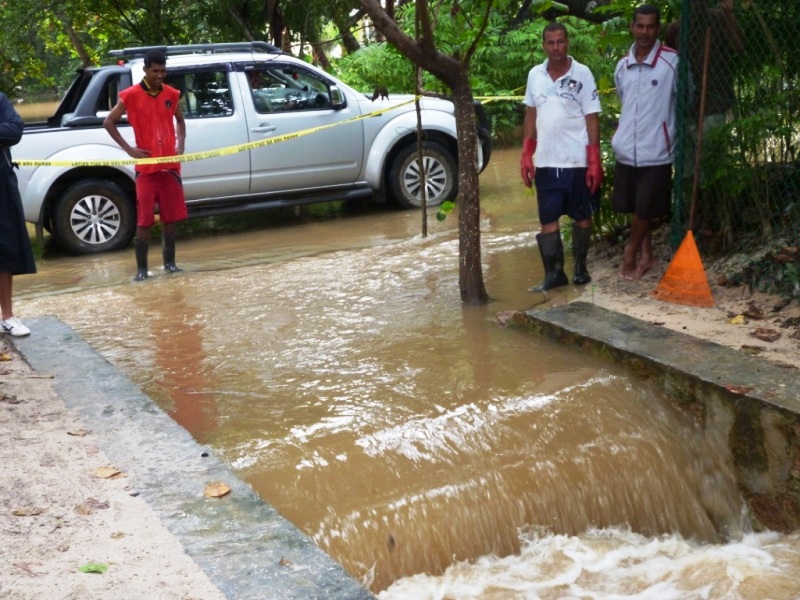
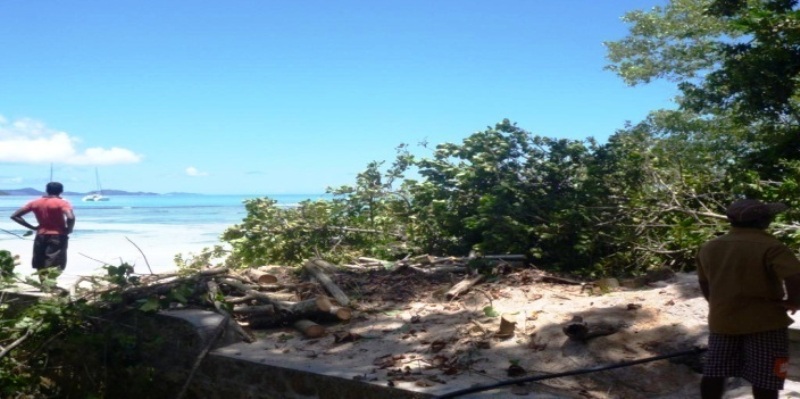
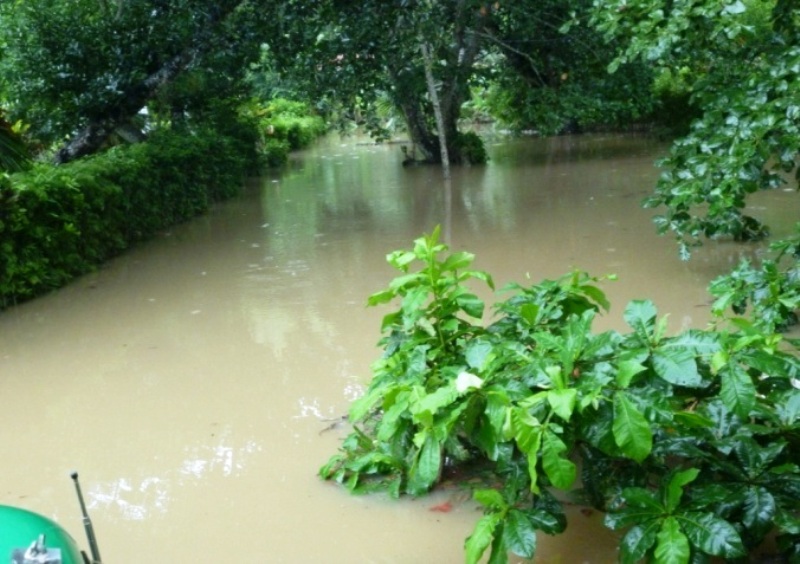
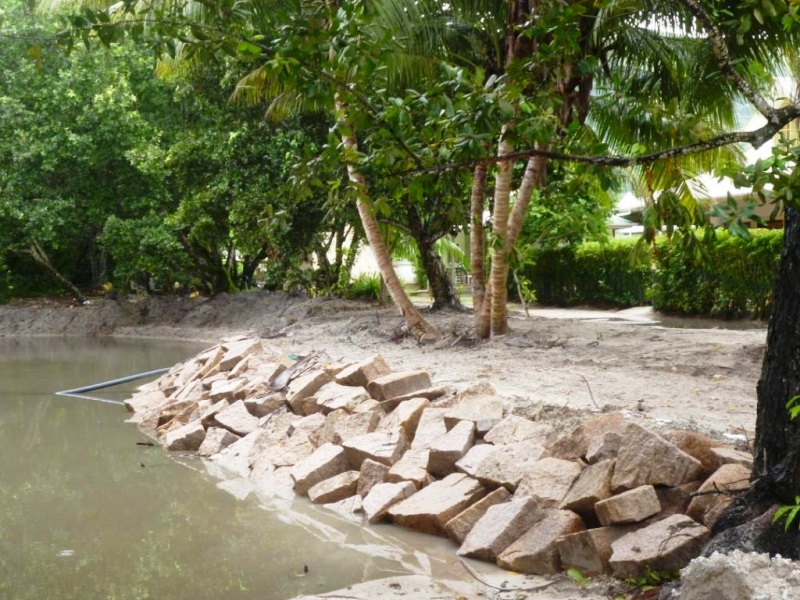
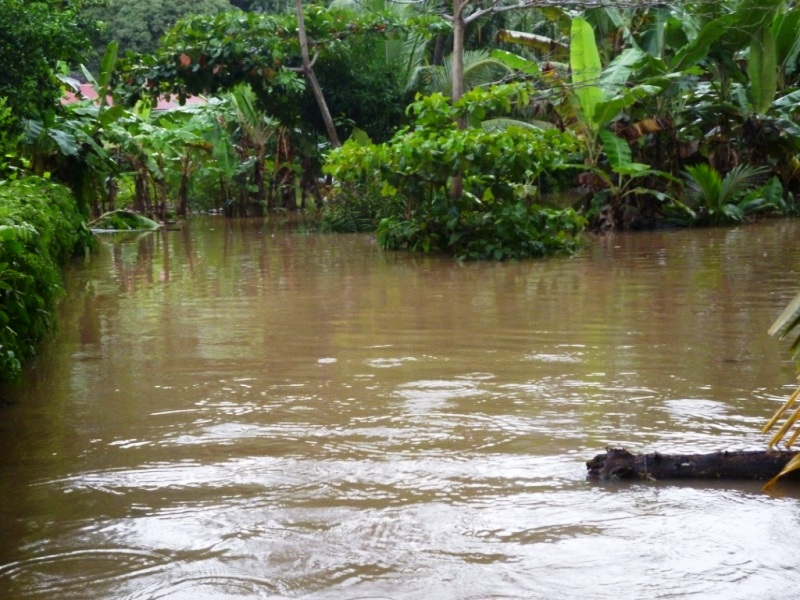
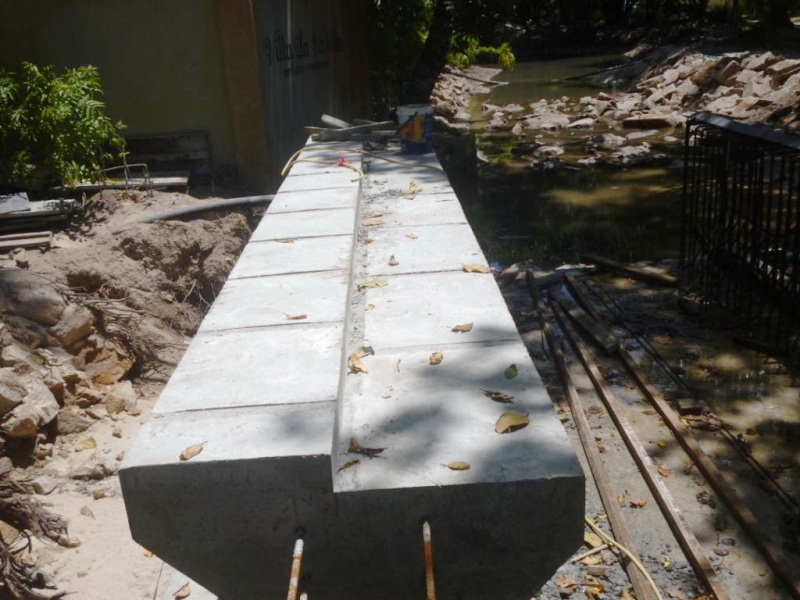
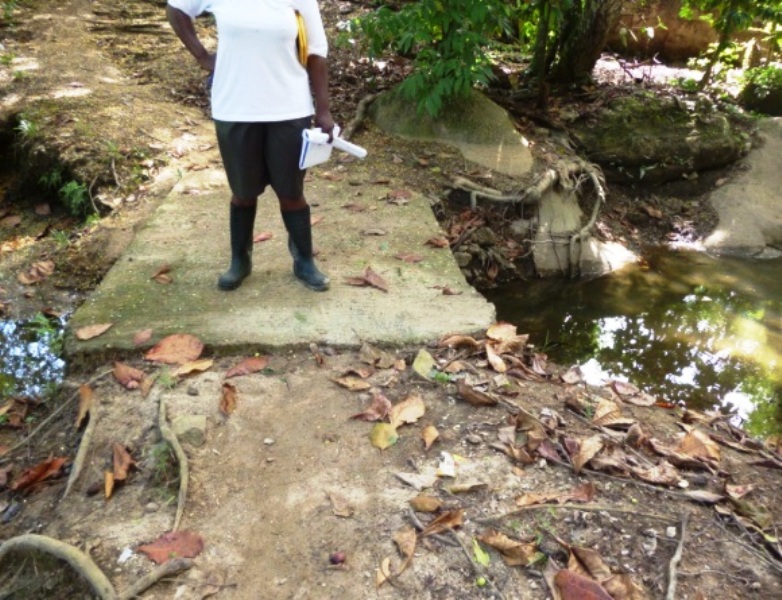
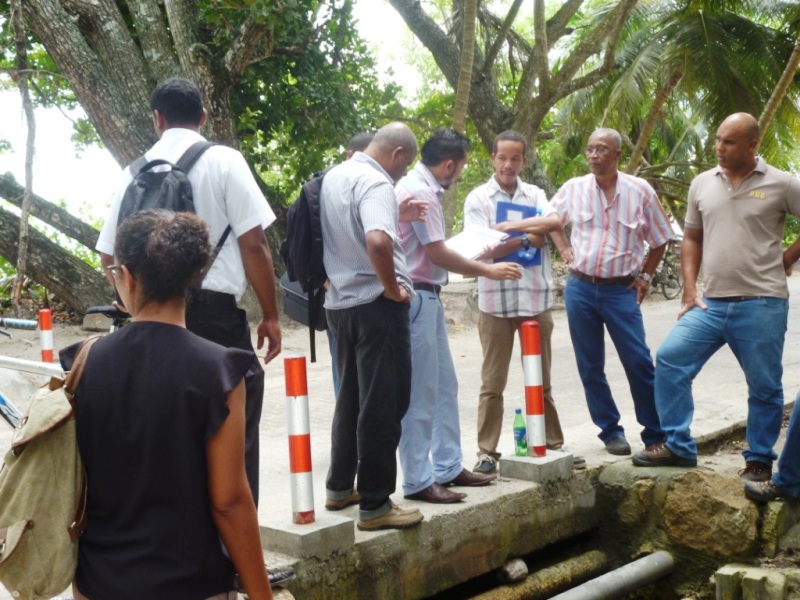
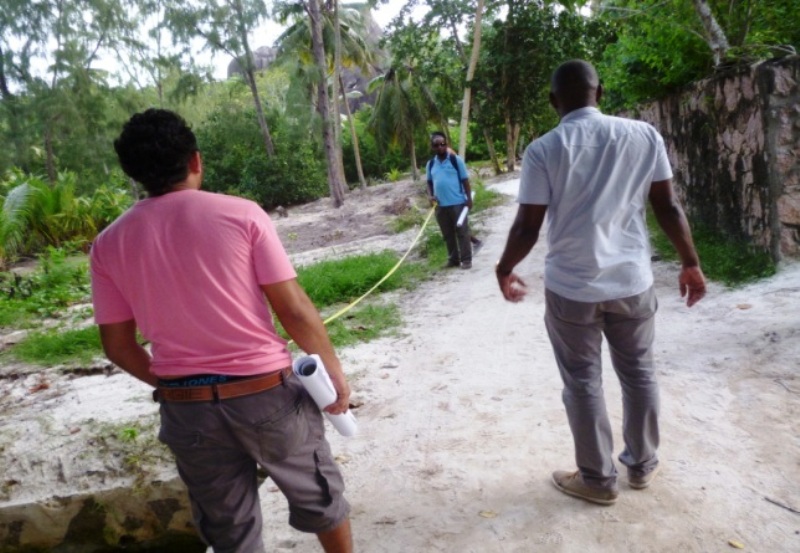
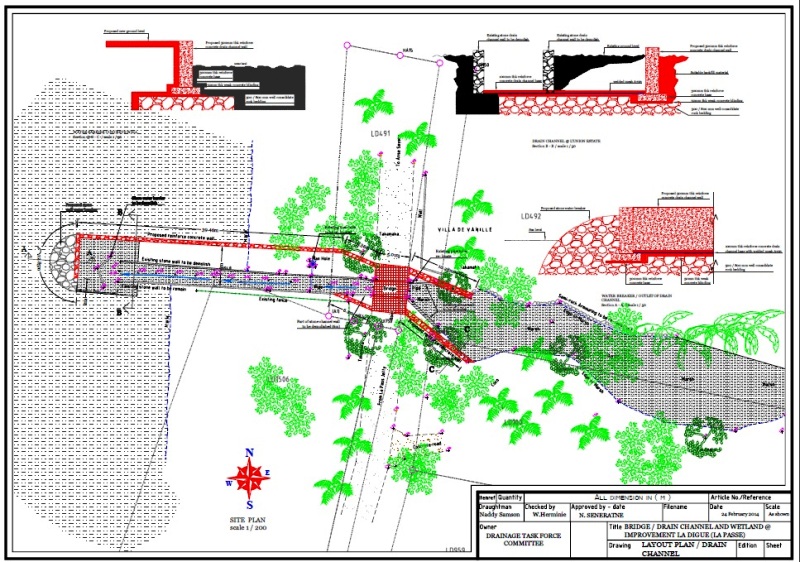
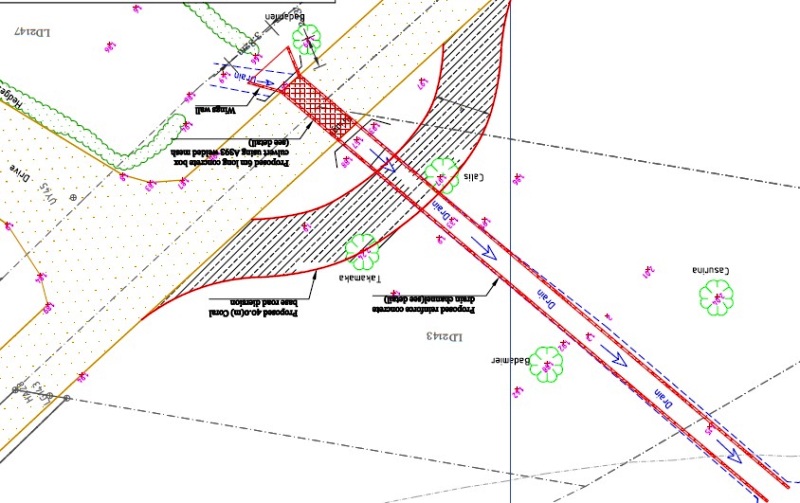
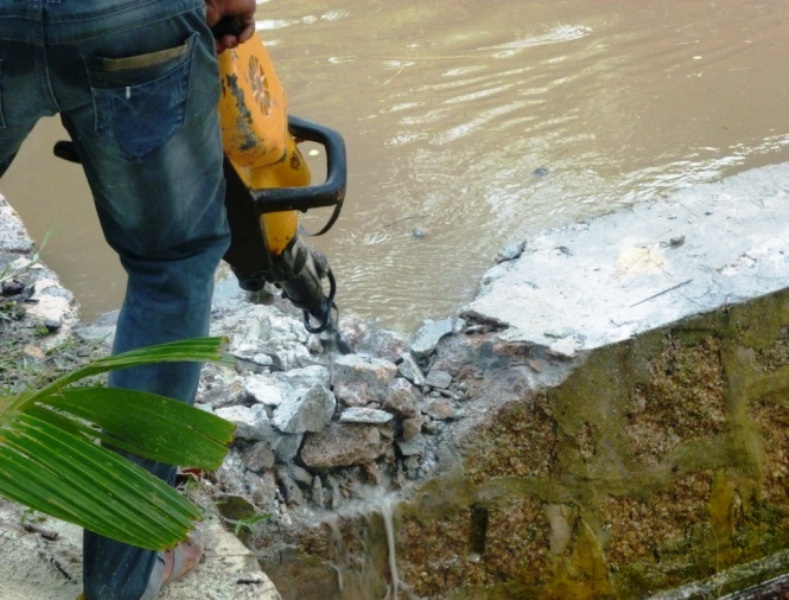
Report compiled by
jean- Claude Labrosse
Coordinator Wetlands Unit/CAMS – CAAID
Ministry of Environment Energy & Climate Change




